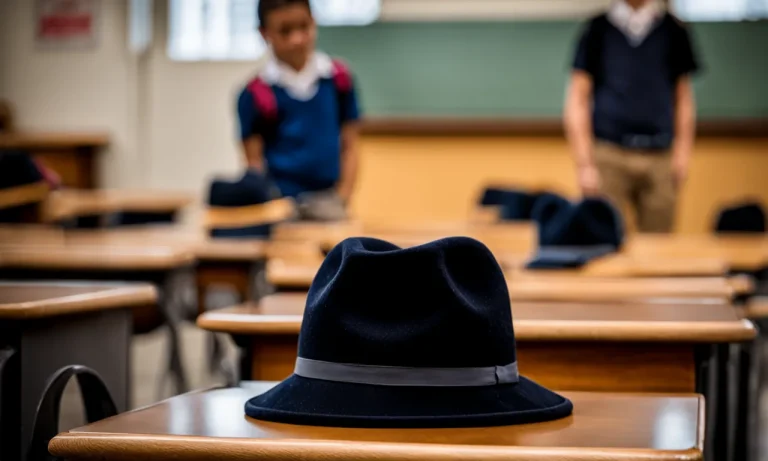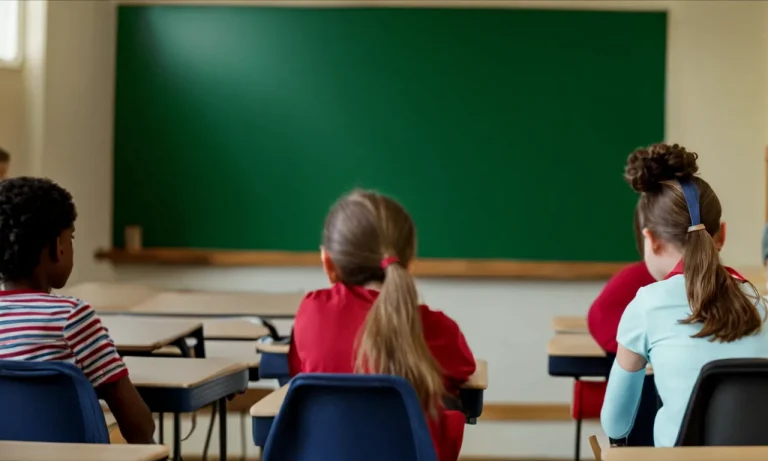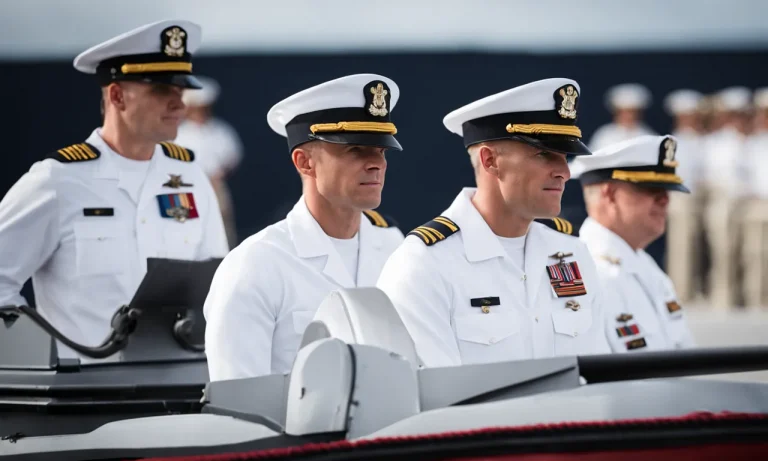The topic of guns in schools is highly controversial. Many people want to know whether off-duty police officers are allowed to carry firearms onto school grounds. This issue involves balancing safety concerns with gun control policies.
If you’re short on time, here’s a quick answer: in most states, off-duty police officers are permitted to carry concealed firearms in schools. However, some school districts prohibit all firearms on campus, even for off-duty officers.
In this approximately 2000 word article, we’ll take an in-depth look at the laws and regulations surrounding off-duty police officers carrying guns in schools. We’ll examine the rationale on both sides of the debate.
Background on Guns in Schools
When it comes to the topic of guns in schools, there is a lot of history, debate, and controversy. In order to fully understand the current situation, it is important to look at the background of firearms restrictions in schools, the rise in school shootings, and the ongoing debate over the effectiveness of armed guards in schools.
History of firearms restrictions in schools
Firearms restrictions in schools can be traced back to the Gun-Free School Zones Act of 1990, which made it illegal to possess a firearm on school property. This act was passed in response to a growing concern over school shootings and the need to create a safe environment for students and staff.
Since then, there have been additional laws and regulations at both the federal and state levels that further restrict the presence of guns in schools.
View this post on Instagram
Most public schools had adopted a written policy prohibiting firearms on school grounds. This shows a widespread commitment to keeping guns out of schools in order to protect students and promote a safe learning environment.
Rise in school shootings and increased security measures
The rise in school shootings over the past few decades has been a major catalyst for increased security measures in schools. Tragic events such as the Columbine High School massacre in 1999 and the Sandy Hook Elementary School shooting in 2012 have shocked the nation and prompted a reevaluation of school safety protocols.
View this post on Instagram
In response to these incidents, schools have implemented measures such as metal detectors, surveillance cameras, and active shooter drills to better protect students and staff. These security measures are aimed at preventing and mitigating potential threats, but there is ongoing debate over their effectiveness and potential unintended consequences.
Debate over effectiveness of armed guards in schools
One proposed solution to the issue of school shootings is the presence of armed guards or school resource officers. Proponents argue that having armed personnel in schools can act as a deterrent and provide a quick response in the event of an active shooter situation.
They point to examples where armed guards have successfully stopped or minimized the impact of a school shooting.
However, opponents raise concerns about the potential for increased violence, racial bias, and the negative impact on the learning environment. They argue that the focus should be on addressing the root causes of violence and providing support for students rather than relying on armed personnel.
It is important to note that the debate surrounding guns in schools is complex and multifaceted. The safety of students and staff is of utmost importance, and finding effective solutions requires careful consideration of all perspectives and evidence-based approaches.
Laws on Off-Duty Police in Schools
When it comes to off-duty police officers carrying firearms in schools, the laws vary from state to state. Some states have specific laws granting authority to off-duty officers to carry guns on school premises, while others prohibit it altogether.
Additionally, individual school districts may have their own policies regarding guns on campus. Let’s take a detailed look at the different aspects of this complex issue.
State laws granting authority to carry firearms
Several states have laws that explicitly grant off-duty police officers the authority to carry firearms in schools. These laws recognize the unique role that off-duty officers play in ensuring public safety, even when they are not officially on duty.
For example, in Texas, off-duty police officers are allowed to carry guns in schools if they meet certain requirements and have the necessary training. Similarly, Florida has a law that authorizes off-duty officers to carry firearms on school grounds.
View this post on Instagram
School district policies prohibiting all guns on campus
On the other hand, some school districts have policies that prohibit all guns on campus, regardless of whether the person carrying the firearm is an off-duty police officer or not. These policies are often put in place to create a safe and secure environment for students and staff, with the belief that the presence of firearms could potentially lead to unintended consequences.
It is important to note that these policies may vary from district to district, so it is crucial to be aware of the specific rules in a given school district.
Case study: California law permitting concealed carry
One notable case study is the state of California, which has a law that permits off-duty police officers to carry concealed firearms on school campuses. This law, known as the “Gun-Free School Zone Act,” allows off-duty officers to carry concealed firearms as long as they have a valid concealed carry permit and meet certain specified conditions.
It is worth mentioning that this law has faced criticism and debate, with proponents arguing for enhanced school security and opponents expressing concerns about the potential risks associated with having armed individuals on campus.
Arguments For and Against Armed Off-Duty Police
Pros: Increased security and faster response times
Many supporters argue that allowing off-duty police to carry firearms in schools provides an added layer of security and protection. If an active shooter situation were to occur, having an armed officer already on campus could allow for a faster response time and potentially save more lives.
Statistics show that active shooter incidents are often over within minutes, so having armed personnel on site is crucial.
Off-duty officers who volunteer for these assignments are highly trained in responding to violent threats. Their extensive firearm and situational training gives them an advantage in quickly and effectively neutralizing a shooter.
This could buy vital extra minutes for students and staff to evacuate or barricade themselves for safety.
Cons: Accidental discharges and escalated confrontations
Opponents argue that introducing more guns into schools, even in the hands of trained officers, leads to heightened risks. There have been instances of police officers accidentally discharging firearms in schools, creating dangerous situations even when no criminal threat existed.
Additionally, critics point out that research shows the presence of armed officers often leads to more prosecutions of minor disciplinary issues. Having an armed officer may escalate student behavior issues into criminal charges, disproportionately affecting minorities.
This contributes to the “school to prison pipeline” that many education advocates are trying to reform.
Teachers unions and gun control groups mostly opposed
Groups like the National Education Association and March for Our Lives argue more guns in schools inevitably lead to higher risks, especially for students of color. Most support stronger overall gun control measures rather than arming teachers or police in schools.
| Group | Position on Armed Police in Schools |
|---|---|
| NEA | Opposed due to safety concerns |
| AFT | Generally opposed, focus on gun control |
| March for Our Lives | Strongly opposed, advocate for reform |
While many school districts across the country allow armed police, opposition remains strong among major teachers unions and gun safety organizations. Their advocacy against police in schools reflects broader efforts to reform school disciplinary practices and American gun culture.
Best Practices and Alternatives
Training requirements and restrictions for off-duty carry
When it comes to off-duty police officers carrying guns in schools, training requirements and restrictions play a crucial role in ensuring the safety of students and staff. While laws regarding off-duty carry can vary from state to state, it is generally recommended that officers undergo extensive training and meet certain criteria before being allowed to carry firearms in schools.
Some of the training requirements may include proficiency in firearms handling, active shooter response, de-escalation techniques, and knowledge of local laws and regulations. It is important for officers to receive ongoing training to stay updated on the latest tactics and procedures.
Restrictions may also be imposed to ensure that off-duty officers only carry firearms during specific situations, such as when there is a credible threat or when responding to an emergency. This helps prevent misuse of firearms and maintains a controlled environment within schools.
Unarmed security options: SROs, guards, metal detectors
While off-duty police officers carrying guns is one approach to enhancing school security, there are alternative options that do not involve firearms. One such option is the presence of School Resource Officers (SROs) who are specially trained law enforcement officers assigned to schools.
SROs serve as a bridge between the school community and law enforcement, fostering positive relationships and providing a visible security presence. They are trained to handle various situations, including emergency response, conflict resolution, and counseling.
Their role goes beyond mere security and extends to mentoring and educating students about law enforcement and safety.
View this post on Instagram
In addition to SROs, schools can also opt for unarmed security guards who can monitor entrances, patrol hallways, and provide a visible deterrent to potential threats. Metal detectors can be installed at entrances to screen individuals for weapons.
These measures can significantly enhance security without the need for off-duty officers carrying firearms.
Improving mental health resources and reporting systems
Addressing the root causes of violence in schools is another crucial aspect of school safety. Improving mental health resources and reporting systems can help identify and support students who may be at risk of causing harm to themselves or others.
Schools can invest in additional counseling staff, provide training to educators on recognizing signs of distress, and establish clear protocols for reporting concerns. Creating a safe and inclusive environment where students feel comfortable seeking help is essential.
Furthermore, partnerships with local mental health agencies can provide students with access to professional counseling services. This collaboration can help identify and intervene early in cases where individuals may pose a risk to the school community.
Conclusion
In conclusion, laws permitting off-duty police to carry firearms in schools vary widely across the country. While proponents argue it improves security, critics worry about accidents and overreactions. There are alternatives like unarmed guards and better mental health systems.
Overall, the issue will continue being debated as schools aim to balance safety and gun control.
We have now taken a comprehensive look at the complex legal landscape around off-duty police carrying guns in schools. Though states hold significant power in this domain, some precedents at the federal circuit level are shaping interpretations.
With prudent training and restrictions, off-duty police can potentially serve as extra protection. However, unarmed measures and addressing root causes are also important. This issue sits at the intersection of school safety and America’s divisive gun politics.






